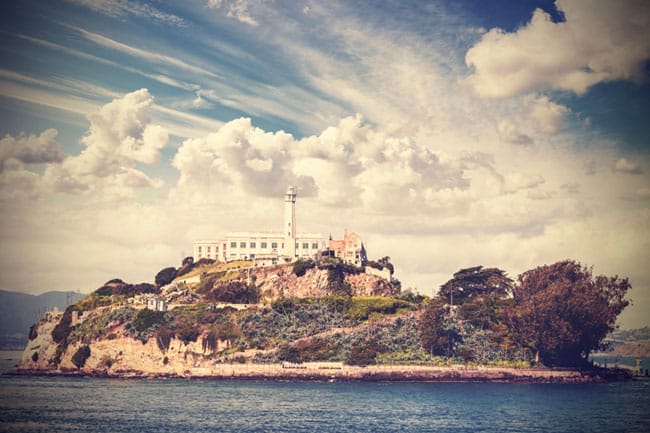My wife and I spent Thanksgiving week in San Francisco, visiting family who live there. One of our afternoons included a visit to Alcatraz—our second trip to “The Rock.” But this time was different. Our reason for going there was to take in Chinese artist Ai Weiwei’s installation, Trace, which is part of an exhibition, @Large: Ai Weiwei on Alcatraz, that runs through April 2015.
Weiwei arguably is China’s most accomplished and controversial artist, unable to leave that country because the government confiscated his passport. In the book that accompanies his presentation, Wei writes:
“I hope @Large will help build understanding and awareness about our history and current conditions. … Many of my friends are still in jail for utterly nonsensical reasons, and the power that put them there has no respect for the law. In such a situation, only art can reveal the deep inner voice of every individual with no concern for political borders, nationality, race or religion. … Freedom is meant to be collectively protected and shared; you are protecting not only yourself but also others fighting for the same cause.”
Watch “@Large: Ai Weiwei on Alcatraz” and hear from the people behind the Alcatraz art exhibition that explores human rights and freedom of expression.
Trace features 176 portraits of political exiles or prisoners constructed with 1.2 million Lego bricks. Images include the late South African leader Nelson Mandela, Tibetan singer Lolo and NSA whistle-blower Edward Snowden. The display is stunning—colorful and remarkably able to depict the essence of each individual’s face. But what struck me almost as much as Weiwei’s convictions and paradoxically gripping art—humanistic creativity within a jailhouse—was the history of Alcatraz’s multiple reincarnations. Briefly, they are:
1850—Part of a “Triangle of Defense” to guard San Francisco Bay
1854—First lighthouse on the Pacific coast
1857—Military prison
1933—America’s first maximum-security civilian penitentiary
1972—New Golden Gate recreational area and seabird sanctuary, managed by the National Park Service
2014—Art museum
If a physical structure can be repurposed as many times as Alcatraz has, then why can’t almost any company reinvent itself at least once? If we are indeed serious about such buzzwords as “spontaneity,” “flexibility” and “resiliency,” then The Rock challenges us to rethink strategic, technical and organizational options over time.
Examples of continuous corporate reinvention are Amazon, Google and Philadelphia-based Comcast. It probably is impossible to parse precisely which industries these companies compete in today, much less those they will compete in tomorrow. By contrast, textbook examples of companies failing to adapt include AOL, Kodak and Blockbuster—each captured by a myopic yesterday.
A barren little island in the middle of a frigid bay as an exemplar of successful serial change! Who would have thunk it?

























